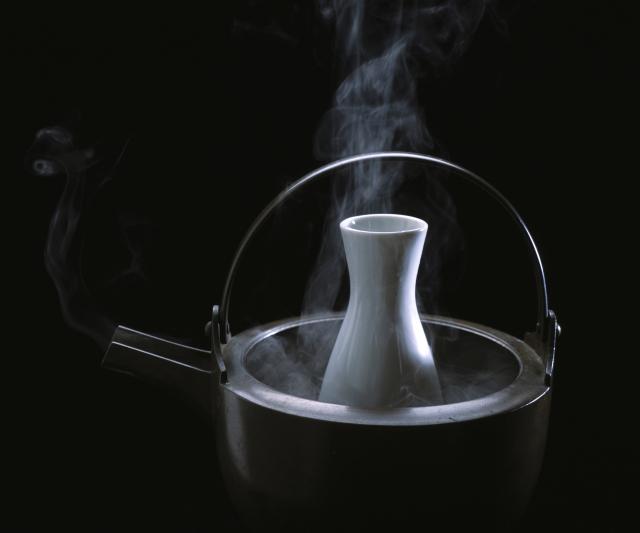Sommelier Talk: Episode 8 – How to Enjoy Hot Sake
Years end in 2010 in Los Angeles was particularly odd as rain continued for days, along with record low temperatures. It was during those times that I’d crave warm foods and drinks. As the winter’s cold penetrated down to my bones, I too headed to an izakaya pub to seek comfort with a drink of kan-zake, warmed sake. With just the first sip, my entire body was engulfed in warmth, filled with euphoria, and feeling grateful to be alive. That one single sip of warm, delicious sake purified my mind of my daily bustle at work, and then I thought, this was probably the very reason why in ancient times, Sake was considered a sacred brew for the Gods.
Let me offer some suggestions as to how restaurants can improve when serving warmed sake. As most food service operators use sake warming machines, I cannot stress enough the importance of keeping the machine clean, flushing with hot water at least once a week to remove all sugar build up in the system. Keeping tokkuri and sakazuki serving wares clean and grease-free is also important. As for temperature settings, I can’t offer one particular range because it would depend on the individual restaurant operation, business size, how busy you are, the size of the tokkuri, and the type of sake.
Many fine dining restaurants in Japan use the “Yusen” method of warming, where sake is poured into individual tokkuri’s, then immersed into a bath of hot water for a few minutes. Although this involves extra steps as compared with a Sake machine, Yusen is simply THE BEST in releasing flavors and aromas to their full potential. Start with the standard “atsu-kan” hot sake, served around 50° C (122°F). Then experiment with other temperatures: warm-to-the-touch “hitohada-kan” at 95°F, lukewarm “nuru-kan” at 104°F, and jumping hot “tobikiri-kan” at 131°F. Please note that, although boiling temperature for water is 100°C (212°F), for sake, it’s lower, at 78°C (172°F).
Keep the Yusen hot water bath at about 80°C (176°F), and never at boiling because heating too quickly leads to a loss of flavor. When that happens, simply add cold water, 10% in volume to adjust the temperature down. Microwaving quickly at high settings is not recommended. Employing the Yusen method creates delicious hot sake which customers may explicitly remember on a cold winter’s evening. That single euphoric experience may convert that guest into a loyal customer.


